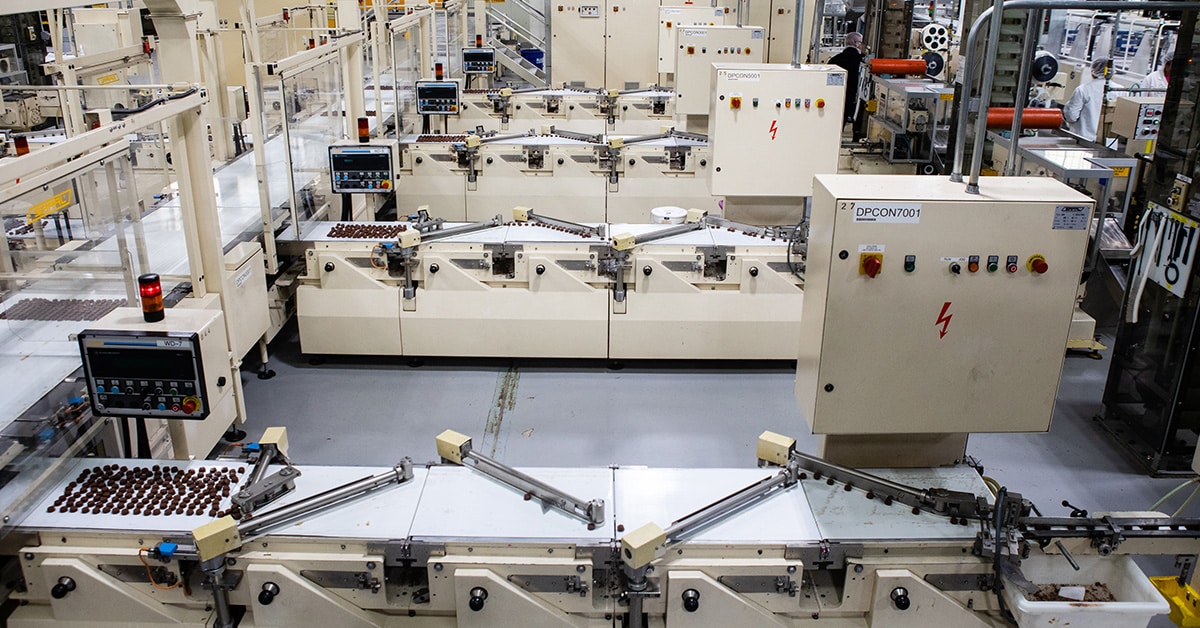Lean manufacturing has two simple goals: minimizing waste and maximizing value.
Waste is defined as anything that doesn’t add value from the perspective of the customer. Under the original iteration of lean manufacturing, there were 7 identified wastes, which primarily focused on production problems and inefficient processes.
An 8th waste was later added to account for what many companies realized was another potential value loss: underutilized talent.
In this piece, we’ll dive into the 8 wastes of lean manufacturing, offer real-world examples of these wastes and explore options to help your business reduce (and remove) the hidden costs of lean waste for good.
What are the 8 wastes of lean manufacturing? (TIMWOODS)
The 8 wastes of lean manufacturing are often remembered using the acronym TIMWOODS, which stands for:
- T — Transportation: Unnecessary movement of goods or materials
- I — Inventory: Excess raw materials, works in progress or finished goods
- M — Motion: Unneeded movement of people
- W — Waiting: Idle time occurs when processes are delayed
- O — Overproduction: Producing more goods than are immediately required
- O — Overprocessing: Doing more work than necessary to produce goods
- D — Defects: Products or components that must be reworked or scrapped
- S — Skills: Not fully utilizing available staff skills
These wastes are balanced by the 6 M’s of manufacturing: manpower, machinery, methods, materials, measurement and mother nature.
Breakdown of each lean waste type with examples
While the TIMWOODS acronym is a great starting point, it’s worth digging deeper into the 8 wastes. Here’s a look at what each type looks like in practice and the potential impacts of waste on your organization.
1. Transportation — Transportation waste occurs when materials or products are moved more than necessary to complete a task.
- Examples:
- After the first step of a production process, 100 components must be moved to the next workstation using a wheeled bin, but the bin can only carry 50 at a time. The result is transportation waste.
- The company purchases a new, 100-component bin, but due to poor factory layout, the next machine in the process is located on the opposite side of the production floor, leading to more wasted transportation time.
- Impact:
- Transportation waste leads to longer lead times, higher risk of product damage and increased labor costs. Simply put, the farther goods need to travel, the more waste is generated.
2. Inventory — Inventory waste results from having excess raw materials, components, work-in-progress items, or finished goods beyond what is immediately required.
- Examples:
- To meet a surge in product demand, a manufacturing company overstocks critical components. When demand falls, these components remain in storage indefinitely.
- Excess inventory can create bottlenecks as overstocked parts are moved to accommodate new components.
- Impact:
- Excess inventory increases your storage costs and ties up capital in goods or components you may not use. It can also hide other inefficiencies as goods are continually moved from place to place.
3. Motion — Motion waste is the unnecessary movement of people. The farther and more frequently staff travels to complete a task, the greater the overall waste.
- Examples:
- Tools needed for a specific process are located far away from workstations, requiring staff to walk significant distances each time they need a new tool.
- Poorly designed workstations may lead to excessive reaching or bending, which can cause injury.
- Impact:
- Motion waste creates the conditions for worker fatigue, which leads to process inefficiencies and increased injury risk. This means more time and money are required to complete production tasks.
4. Waiting — Waiting waste occurs when processes are delayed. This type of waste has a cumulative effect — delays at the beginning of production cycles lead to longer wait times at each subsequent workstation.
- Examples:
- Machines experience unexpected failures, leading to significant maintenance downtimes.
- Parts are delayed due to warehouse or stocking issues, or when staff must wait for approvals before starting production processes.
- Impact:
- Waste due to waiting or idle time reduces both worker productivity and process throughput. This means fewer goods and components produced, which limits profitability.
5. Overproduction — Overproduction waste occurs when manufacturers produce more goods or components than are immediately required.
- Examples:
- Demand spikes lead to large production batches. When demand falls, companies are left with goods and components they can’t sell.
- In an attempt to use up excess parts, manufacturers overproduce goods, which must then be stored or sold at a loss.
- Impact:
- Overproduction leads to excess goods or components that take up valuable (and expensive) inventory space. It can also create shortages for new production batches if necessary materials are over-used.
6. Overprocessing — Overprocessing, also known as excess processing, is doing more work than necessary to complete tasks or produce components.
- Examples:
- Overly complex machines can lead to overprocessing. For example, older assembly tools may require additional steps or monitoring to ensure reliable results.
- Redundant inspections also contribute to overprocessing. While it’s important to inspect products or components for defects, additional inspections after quality has already been verified wastes both time and money.
- Impact:
- Overprocessing also creates energy and material waste. Complex machinery often takes longer to operate and run, meaning more energy is used. These machines may also be less efficient, requiring more materials for the same output as newer devices.
7. Defects — Defects are finished products or components that must be reworked or scrapped.
- Examples:
- Incorrect component dimensions render them unusable, meaning they must be reprocessed to meet specifications.
- Products that fail quality management checks may have to be scrapped, leading to material waste.
- Impact:
- Defects increase the total cost of production, delay the delivery of orders and can negatively impact reputation.
8. Skills — Skills waste, a more recent addition to the lean manufacturing framework, occurs when companies fail to fully utilize employees’ abilities, ideas, or talents.
- Examples:
- Providing employees with minimal training on complex production machines leads to longer production times for components.
- Companies ignore worker suggestions for improvements, such as changing workstation configuration or proactively maintaining machinery.
- Impact:
- Skills waste reduces staff morale, which limits innovation and hampers performance.
How to identify and eliminate lean waste
To eliminate waste, manufacturers need to identify it in action. Common strategies to identify waste include:
- Value stream mapping: Value stream mapping helps visualize where waste occurs in your production process. It is often used to identify and resolve bottlenecks or pinpoint opportunities for improvement, and is used as part of Lean Six Sigma, which combines the principles of both methods to reduce waste.
- Gemba walks: “Gemba” is a Japanese term meaning “actual place.” In this case, the actual place is your production floor, since this is where waste happens. During a Gemba walk, executives and team leaders see processes in real-time to pinpoint sources of waste.
- Tracking KPIs: Key performance indicators (KPIs) such as cycle time, scrap rate and downtime help teams identify where processes are working as intended and where improvements are required.
- Implementing continuous improvement processes: Continuous improvement processes, such as Kaizen, recognize that waste is never a “solved” problem. By regularly reevaluating waste and adapting strategies to account for changes, companies can maximize efficiency.
- Leveraging connected technologies: Using connected technologies, including IoT sensors, machine monitoring tools and real-time dashboards, manufacturers gain visibility into processes and carry out continuous machine health monitoring.
- Educating employees: Improved employee education helps boost operational efficiency and reduce waste. It is also a core component of total productive maintenance (TPM), which is a comprehensive approach to maintenance that recognizes the key role of employees in maintaining and improving production processes.
How outsourced maintenance helps reduce waste through automation
While it’s possible to handle proactive maintenance and monitoring in-house, the time and resources required may negatively impact production outputs.
Working with a trusted, outsourced maintenance partner can help companies reduce waste in the manufacturing process without sacrificing production speed.
Outsourced maintenance offers multiple benefits, such as:
- Proactive maintenance management: Equipment degradation and failure are two primary sources of waste. For example, if a production line machine is leaking coolant, it may continue to work but require more energy to produce the same output. If the same machine fails unexpectedly, it can result in significant production delays.
- Outsourced maintenance services can provide proactive and predictive maintenance solutions that track and monitor machine conditions in real-time. This reduces the risk of unexpected failure and the total amount of waste from defects, downtime and overprocessing.
- On-site expertise: Trusted maintenance partners offer both on-demand and on-site expertise. This typically starts with an on-site assessment: Experts are sent to observe your processes up close to determine where improvements are possible and where waste can be eliminated.
- Outsourced providers may also offer regular, on-site visits along with on-demand responses if manufacturers encounter unexpected issues.
- Automation implementation: Another benefit of outsourced teams is the deployment of automation tools and Industrial Internet of Things (IIoT) technologies to help support lean principles and enhance waste reduction. In practice, this might be the installation of pressure, temperature and vibration sensors to monitor performance in real-time. Or it could be the deployment of automated software tools that provide both in-depth analysis and big-picture visualizations of lean manufacturing waste.
- Strategy alignment: Finally, outsourced maintenance companies ensure that maintenance strategies align with lean management processes and outputs.
Consider machine maintenance. Many manufacturers still use a reactive model — they wait until machines fail to repair or replace parts. This approach is wasteful; it means additional machine downtime and may require machine replacement ahead of expected lifecycles. By implementing proactive maintenance, outsourced providers can reduce total downtime and minimize excess wear and tear.
Remove the hidden cost of lean waste for good
Even small waste sources quickly add up, costing companies time, money and resources.
As a result, eliminating waste is a competitive advantage. The more waste you can identify, mitigate and remove, the leaner and more profitable your operations will be.
Ready to remove hidden costs and build better production processes? Partner with ATS to accelerate waste elimination and enhance operational excellence. Let’s talk.






